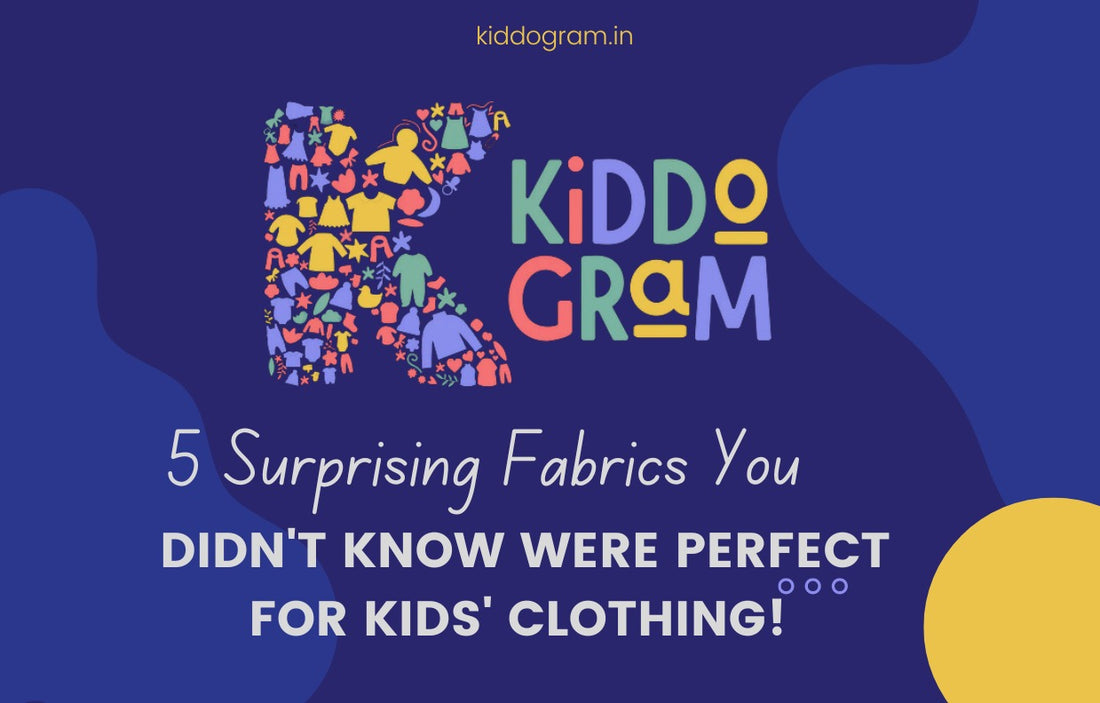When it comes to dressing our little ones, comfort and safety are paramount. As parents, we want to ensure that the fabrics we choose for our children's clothing are not only soft and cozy but also safe and gentle on their delicate skin. In this comprehensive guide, we'll delve into the world of fabrics for kids' clothing, exploring the best options to keep your little ones happy, healthy, and stylish.
Understanding Kids' Skin Sensitivity:
Children's skin is more sensitive than adults', making it susceptible to irritation and allergies. Therefore, selecting the right fabrics for their clothing is crucial to prevent discomfort and potential skin issues. Factors such as breathability, softness, and hypoallergenic properties play a significant role in determining the suitability of fabrics for kids.
Top Fabric Choices for Kids' Clothing:
Organic Cotton:
Organic cotton is a popular choice for kids' clothing due to its softness, breathability, and hypoallergenic properties. Grown without the use of synthetic pesticides and fertilizers, organic cotton is gentle on sensitive skin and less likely to cause irritation or allergic reactions. Additionally, organic cotton is durable and easy to care for, making it ideal for everyday wear.
Bamboo Fabric:
Bamboo fabric is another excellent option for kids' clothing, known for its silky-smooth texture and natural antibacterial properties. Derived from bamboo grass, this sustainable fabric is hypoallergenic, moisture-wicking, and highly breathable, making it perfect for keeping kids cool and comfortable, especially during warmer months.
Linen:
Linen is a lightweight and breathable fabric that is well-suited for kids' clothing, particularly in hot and humid climates. Made from the flax plant, linen absorbs moisture quickly and dries fast, keeping children cool and fresh throughout the day. While linen may wrinkle easily, its durability and natural antibacterial properties make it a favorite choice for casual and formal wear alike.
Modal:
Modal fabric, derived from beech tree pulp, is prized for its exceptional softness, drape, and breathability. Gentle on the skin and resistant to pilling, modal is an excellent option for children with sensitive skin or sensory sensitivities. Additionally, modal fabric retains its color vibrancy wash after wash, ensuring that kids' clothing looks as good as new for longer.
Merino Wool:
Merino wool is a luxurious yet practical choice for kids' clothing, especially in cooler climates. Unlike traditional wool, merino wool is incredibly soft, lightweight, and non-itchy, making it comfortable to wear directly against the skin. Merino wool also has natural temperature-regulating properties, keeping children warm in cold weather and cool in warmer temperatures.
Tips for Choosing Kids' Clothing Fabrics:
Prioritize Comfort: Opt for fabrics that feel soft and gentle against the skin, allowing for unrestricted movement and play.
Consider Breathability: Choose breathable fabrics that allow air to circulate, preventing overheating and discomfort, particularly during hot weather.
Check for Allergens: Be mindful of potential allergens or irritants in fabrics, especially if your child has sensitive skin or allergies.
Invest in Quality: Select high-quality fabrics that are durable, easy to care for, and retain their shape and color after repeated washes.
Conclusion:
Choosing the right fabrics for kids' clothing is essential for ensuring their comfort, safety, and well-being. By prioritizing softness, breathability, and hypoallergenic properties, parents can select fabrics that keep their little ones happy, healthy, and stylish. Whether it's organic cotton, bamboo, linen, modal, or merino wool, there are plenty of options available to suit every child's needs and preferences. With the information provided in this guide, parents can make informed choices when it comes to dressing their children in fabrics that they can feel good about.

